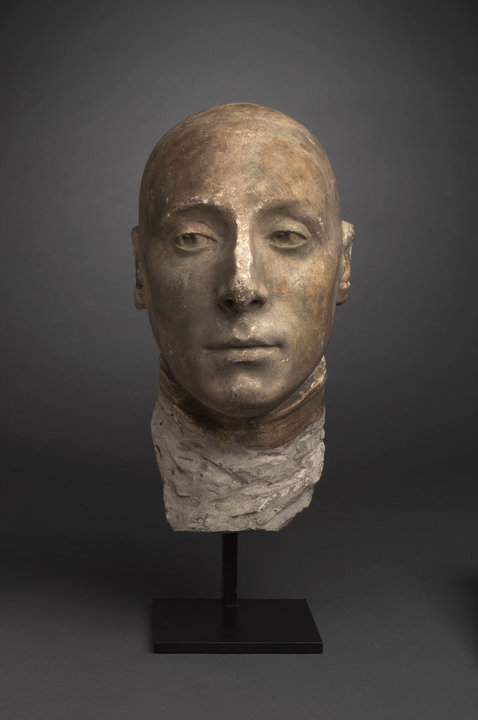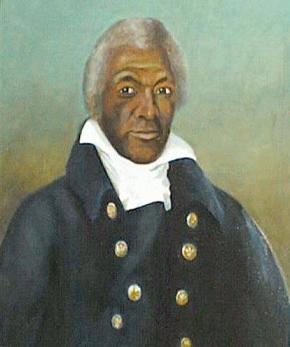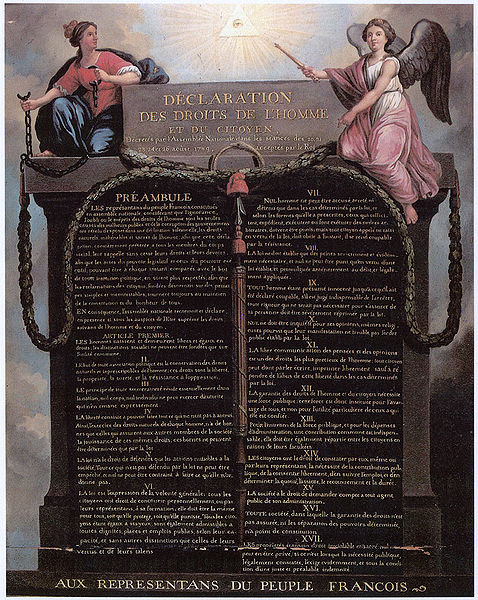
Documentary Review: Lafayette: The Lost Hero
PBS station WETA, Storyville Films and The Documentary Group have produced a new documentary on the Marquis de Lafayette which will be aired on PBS stations nationwide on Monday, September 13th at 10pm. They graciously sent What Would The Founders Think? an advance copy of Lafayette: The Lost Hero.
Had the producers of this excellent new documentary consulted the writers at What Would The Founders Think?, we would have suggested naming it Lafayette: The Forgotten Founder. After watching the film, the reason for our preference should be clear. But the choice of title is one of only two small criticisms that will be offered here.  The second criticism is that the film’s creators limited the program to only 1 hour. The documentary is filmed beautifully and tantalizes the viewer by piquing his curiosity on numerous points.
 Lafayette: The Lost Hero is a brief biography of the man who, while only in his twenties, became the most famous person in the world. The young and extremely wealthy aristocrat became so enamored with the American struggle for liberty that he abandoned a life of ease and comfort to cross the Atlantic and offer his assistance. He was a visionary who clearly foresaw America’s future – before almost anyone else.  He wrote to his wife in 1777:
Lafayette: The Lost Hero is a brief biography of the man who, while only in his twenties, became the most famous person in the world. The young and extremely wealthy aristocrat became so enamored with the American struggle for liberty that he abandoned a life of ease and comfort to cross the Atlantic and offer his assistance. He was a visionary who clearly foresaw America’s future – before almost anyone else.  He wrote to his wife in 1777:
The happiness of America is intimately connected with the happiness of all mankind; she is destined to become the safe and venerable asylum of virtue, of honesty, of tolerance, and quality and of peaceful liberty.
After making the arduous 6 week ocean passage, (during which he learned to speak English because he “had to understand the people of liberty”), he traveled 700 miles on horseback and on foot to Philadelphia — where he was initially turned away!
Fortunately for America, those in Congress received a letter of recommendation from Benjamin Franklin, instructing them to welcome Lafayette as an important asset to the cause. The documentary notes that General Washington was immediately taken with the young Frenchman, in part, because of his humble demeanor.  In responding to Americans embarrassed by the ragged state of their army. Lafayette simply stated with inimitable humility, “I am here to learn, not to teach.”
General Washington soon put the young man to good use. Lafayette shed blood for the new republic at the battle of Brandywine and continued to fight despite being wounded in the leg by a musket ball. He managed an orderly retreat and prevented a catastrophic rout.
He wintered at Valley Forge with his troops under brutal conditions that can only be imagined today. It was here he proved his loyalty to Washington by refusing to be drawn into the machinations of the General’s political enemies in Congress. The men known as the Conway cabal (referred to in the documentary only as the cabal) were scheming to replace Washington and sought Lafayette’s support. Lafayette’s conduct during this period earned Washington’s lifelong devotion and cemented the bond between them.
 As Lafayette’s fame grew, so did his value to America. He reflected glory on France and the Americans soon realized that he could do more for the cause by sending him back to the court of Versailles. Initially received with some asperity by the king, irritated because Lafayette had not asked for permission to go to America, he quickly became a court favorite and helped persuade France to lend funds to the United States in 1779.
As Lafayette’s fame grew, so did his value to America. He reflected glory on France and the Americans soon realized that he could do more for the cause by sending him back to the court of Versailles. Initially received with some asperity by the king, irritated because Lafayette had not asked for permission to go to America, he quickly became a court favorite and helped persuade France to lend funds to the United States in 1779.
By 1780 he was on his way back to America to rejoin the fight. He arrived in Boston in May of 1781 and was sent south to fight Cornwallis at Richmond. General Lafayette initially had so few forces that he was compelled to fight skirmishes in guerrilla warfare mode. He was determined to harass and harry, but not risk his limited troops in a direct confrontation. When reinforcements augmented his strength to an army of 5,000, he began to pursue Cornwallis in earnest.
 It was at this time that Lafayette employed a slave named James Armistead to infiltrate Cornwallis’ camp. Â Armistead both gathered intelligence and disseminated false information designed to lure Cornwallis into a trap.
It was at this time that Lafayette employed a slave named James Armistead to infiltrate Cornwallis’ camp. Â Armistead both gathered intelligence and disseminated false information designed to lure Cornwallis into a trap.
Lafayette also proved his value in his dealings with the Comte de Grasse, admiral of the French Fleet. The French were ultimately able to chase the British fleet northward, effectively cutting off Cornwallis’ supply and means of retreat.
During the British surrender after the siege of Yorktown, Lafayette again demonstrated graciousness and devotion to America. When British troops tried to surrender their weapons to the French, Lafayette forced them to surrender to American forces and instructed the band to play “Yankee Doodle.”
Before returning to France, Lafayette took time to successfully argue for the emancipation of the loyal spy James Armistead. As a mark of his devotion and appreciation, Armistead took the surname Lafayette.
His advocacy for Armistead was not an isolated event. By 1783, Lafayette was back in Paris writing to Washington and urging him to press for the emancipation of slaves. For his part, Lafayette purchased land in the French colony of Cayenne for his plantation La Belle Gabrielle, to “experiment” with education, and emancipation. He also joined the French abolitionist group, Society of the Friends of the Blacks, which advocated ending the slave trade and equal rights for free blacks.1
 Later, he collaborated with Thomas Jefferson to produce the Declaration of the Rights of Man and of the Citizen which he presented to the Estates General in 1789 as the first step toward writing a constitution for France. Lafayette was briefly able to leverage his popularity to maintain order, acting as intermediary between the revolutionary masses and the aristocracy. But by 1791, the revolution had spun out of control. Lafayette went from being beloved on all sides to being reviled as a traitor to his class and to the French revolution.
Later, he collaborated with Thomas Jefferson to produce the Declaration of the Rights of Man and of the Citizen which he presented to the Estates General in 1789 as the first step toward writing a constitution for France. Lafayette was briefly able to leverage his popularity to maintain order, acting as intermediary between the revolutionary masses and the aristocracy. But by 1791, the revolution had spun out of control. Lafayette went from being beloved on all sides to being reviled as a traitor to his class and to the French revolution.
Lafayette tried to flee France but was captured and imprisoned by Prussia. He was held in multiple cities each farther east than the last, and finally moved to Olmutz.2
Lafayette’s wife Adrienne was also arrested and imprisoned in France for several years. The film reveals their great affection for one another (one of the historians interviewed is a direct descendant who bears a striking resemblance to the lovely Adrienne). After several years of captivity, Adrienne was released in poor health. After selling property to raise funds, she traveled to Vienna and successfully petitioned the Emperor Francis II for permission to join her husband. She lived with him in his cell until 1797 when, due in part to diplomatic efforts by the US government, they were released. Her health destroyed, Adrienne only lived a few more years.
General Lafayette made one more trip to the country he helped found. In 1824 he was invited by President James Monroe to make a grand tour of America and celebrate the 50th anniversary of its founding. On his arrival at Staten Island, NY, Lafayette was greeted by 80,000 well-wishers – a crowd of astronomical proportions for the time.
Two poignant events on the tour are included in the film. One was the emotional reunion of the General with James (Armistead) Lafayette. While touring Yorktown, Lafayette recognized his old friend in the crowd and stopped the procession to embrace the ex-slave. The other event, touched on briefly, was Lafayette’s visit to Washington’s tomb at Mt. Vernon. While there, Lafayette collected some dirt which, he  instructed, was to be placed  in his tomb so that he would be buried in American soil. When Lafayette died in 1834, his instructions were carried out. (The film indicates that the soil came from the ground around Washington’s tomb.)
The film closes with a quote from Lafayette that sums up his feeling for his adopted country.
Humanity has won its battle. Liberty now has a country.
Lafayette was a man of principle and character who believed in the potential of America as a mecca of freedom for the world.  He risked his fortune and his life for that belief. He deserves the appellation of  American Founder. as this film illustrates. Thus our contention that it should have been entitled: Lafayette the Forgotten Founder.
1Biography: Gilbert du Motier, marquis de Lafayette – Answers.com
2Wikipedia Article: Gilbert du Motier, marquis de Lafayette
 The posts are coming!
The posts are coming!


2 comments
We are looking forward to watching this program. Thanks for the heads up.
[Reply]
Although I am so old that I learned real American history in school, so at least am familiar with Lafayette, thanks very much for this fascinating preview. Definitely will be watching on Sept. 13.
[Reply]
Leave a Comment